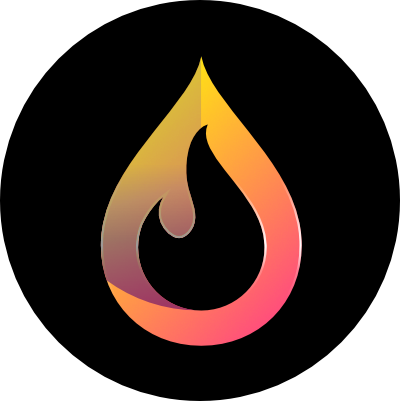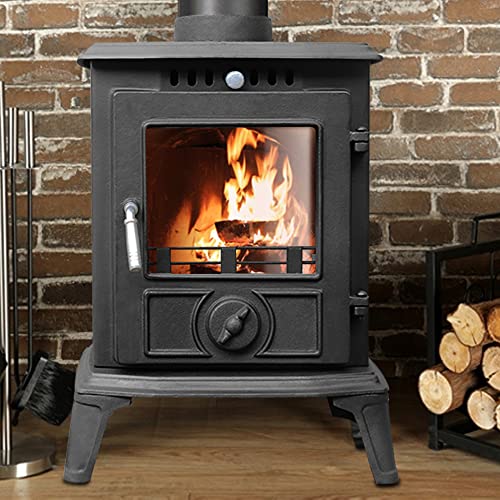How To Get More Results With Your Multi Fuel Boiler Stove
페이지 정보

본문
 Multi Fuel Boiler Stove
Multi Fuel Boiler Stove multi fuel stoves banbury fuel boiler stoves are engineered to burn a wide range of fuels including smokeless fuel, logs and coal. They can be connected to your existing heating system to help you save money.
multi fuel stoves banbury fuel boiler stoves are engineered to burn a wide range of fuels including smokeless fuel, logs and coal. They can be connected to your existing heating system to help you save money.When burning coal, the grate has to be removed in order for air to enter the fire from below. Some multi-Dual Fuel Stoves stoves have a riddling grates and asphans to make this process simpler.
Energy Efficiency
A multi fuel stove can burn a range of different kinds of solid fuels like peat and turf Briquettes, smokeless coal, and anthracite. They can also burn logs. This makes them more versatile than wood-burning stoves because they can be used using a wider variety of fuels.
The majority of modern Ecodesign-compliant stoves are rated at an 80% or higher overall efficiency. This means they produce less CO2 emissions and aid in meeting SAP energy requirements for primary heating. A lot of homes in the UK utilize a wood burning multi fuel stove to heat their living spaces and also have central heating systems (either gas boiler or hot water cylinder) as the main source of heating. It is typically complemented by an additional heating system like an air or a convection hot-water stove.
The efficiency of the stove is important as it determines the amount of heat that is delivered to your home. It should not be confused with the combustion efficiency which is the number that appears on the side of the stove. The combustion efficiency is an indicator of how efficient a stove was in a laboratory test. It is not a reflection of the efficiency of the whole system of the chimney, fuel and stove.
Stove makers often refer to combustion efficiency, but not System Efficiency on their marketing material but this is not true. System Efficiency is not a measure of the stove's performance in a test conducted in a lab. It is a calculation that takes into account the total emissivities of both the stove and the fuel in the home.
Note that the TE of a certain fuel/stove combination depends on the volatile matter content of the solid fuel, as this will determine whether particulate-bound pollutants (e.g. PM2.5, EC and BaPeq) are emitted during fuel ignition or if they are retained during the pyrolysis stage. When volatile matter is retained in the pyrolysis phase, it releases carbonaceous aerosols which are not effectively bound and hence contribute to total emissivities.
Low Maintenance
Non-catalytic stoves need less maintenance and are less complicated to use than catalytic stoves. They are less expensive and have a preheated burning system to boost performance. They can burn a variety of solid fuels including smokeless coal. They have an adjustable primary air control that allows you to adjust the rate at which the fire is burning. This lets you create more efficient and effective fire with greater flame spread and less emissions.
Depending on the type of stove you are using your stove, you will need to replenish it every 10-14 hours or so and clean the ash pan on a regular basis. If you are using smokeless coal, then the ash needs to be riddled in order to keep it from blocking the air passages for combustion and starving the fuel with oxygen. This can be done using a simple tool that resembles the pitchfork.
BTU ratings are a good indicator of the power of a multi-fuel stove. They shouldn't, however, be the only specifications you look at when comparing models. Other aspects, such as burner size and weight, could have a similar effect on performance.
Many modern multi fuel stoves can be used with a wide range of liquid fuels, including white gas, isobutane, and kerosene. This flexibility makes them ideal for backpacking, especially in remote areas where you won't have traditional canister fuel readily available.
multi fuel stoves for sale-fuel liquid-fuel stoves usually come with a regulator that helps you manage the amount of fuel you use. They're also more efficient than stoves powered by canister fuel, and perform well at high altitudes and in cold temperatures.
Some 10kw multi fuel stove fuel stoves can be combined with wood and allow you to become self-sufficient and less dependent on fuel purchased. It is important to note that using a multi-fuel stove with wood can produce more harmful emissions and isn't recommended unless you've taken the appropriate precautions in place.
Thermostat Control
A boiler stove is a great choice for multi-fuel stoves for those who want the stove to heat both their water and their living space. The boiler stove can heat a tank of water within the stove, or be connected to an oil or gas central heating system to increase its heating capacity. The capability to burn different solid fuels is another reason why these kinds of stove can be used in smoke-controlled areas which makes them an ideal option for urban homes.
Modern stoves usually have a thermostat control that permits the user to manually adjust the amount of fuel burned, which then regulates the amount of heat produced. This feature can help to save money by making sure that the maximum amount of heat is generated for each item of fuel utilized.
Boiler stoves can be operated with a variety of fuel types, including smokeless, peat, and wood coal. Most multifuel stoves allow you to choose between different kinds of fuels when making an open flame. This is due to different fuels requiring an airflow that is slightly different to burn properly.
Smokeless coal for example requires combustion air to flow through. Most multi-fuel stoves have an open or partially open riddling grates that allow air to flow through. This grate needs to be riddled frequently to prevent the accumulation of ash, which could cause the fire die.
All multifuel stoves are able to transfer some of the heat they generate to a domestic water heater, regardless of whether they're boiler stoves or not. The exact amount of hot water that is supplied by a stove will vary on the model, but in general they are capable of supplying up to 8 standard sized radiators. Certain models, such as the Stovax View 8 are able achieve this with the capacity of 4.9kW for the room and 8.2kW for the boiler. This will be enough to heat the majority of domestic radiators.
Ideal for Smoke-Controlled Areas
The ability to burn different types of smokeless fuels makes a multifuel stove an ideal option for those who live in Smoke Control Areas. You can save time and money by not having to carry around or store logs or briquettes that aren't always available. The contemporary multi fuel stoves 5kw-fuel stoves are also more modern than their open fire equivalents and come in a range of sizes that can be adapted to homes with various interior design schemes.
They are DEFRA approved or exempted solid fuel appliances and are tested for strict emission limits. This is especially applicable when burning "smokeless" fuels. These stoves are ideal if you reside in a place that has lots of smoke-producing structures. They will limit the amount of black fumes generated by your heating system.
A DEFRA-approved stove can be used to burn various solid fuels like anthracite or smokeless briquettes. Some fuels cannot be burned in any way and it is illegal to use them unless you have an approved smoke control certificate.
This kind of stove can be adapted to accommodate oil and gas sealed heating systems, or even underfloor heating, based on the model you pick. Based on the model, they might also be be linked to solar panels and renewable energy sources.
A multi-fuel stove will have a glass window through which you can see the fire and the flue, which draws and expels combustion gases from the appliance. It also has a fire grate where you can place your fuel on and the primary air supply to the flames is controlled with an adjustable slider that is located on the bottom part of the stove door. Some models also have secondary or tertiary flow system that introduces the pre-heated air from the secondary or tertiary into the combustion chamber at a height above the fuelbed. This helps reduce emissions by burning non-burned hydrocarbons in the fume before it is vented upwards into a chimney system.
- 이전글Perayaan Bermain Slots Online 24.08.26
- 다음글Brake Repair - How To Find A Credible Shop 24.08.26
댓글목록
등록된 댓글이 없습니다.